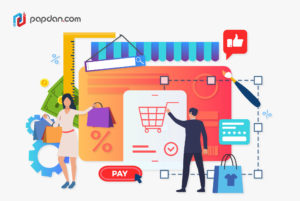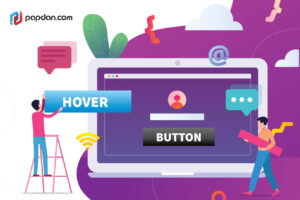On any given day, I spend probably 3 to 4 hours tinkering with a user interface of an e-commerce website. I might be simply browsing what’s on sale on Steam, salivating over the dozens of terrific watches from NOMOS Glashütte or just checking out for new jeans because you could never have too many pair of jeans. Two decades ago, doing any of the above things would require me to walk into an actual store and do some window shopping, the progress made in web development in the past 20 years means that I now can do all of the above things while sitting in my bathroom.
What this shift means is that the time businesses used to spend on coming up with just the perfect layout for their store now should be spend on coming up with the ideal website for their business. Functional should be the minimum requirement, not the ultimate goal, and if there’s anything you can do or add that would make the website more appealing or easier to use, you should definitely give it a shot. Now that small businesses are dime a dozen, it’s not enough to have a great product line-up, the importance of having an equally great space to house all of those products should never be underestimated.
The digital store layout
It turns out that I apparently have a relatively higher standard when it comes to store layouts as I once walked out of a fast fashion retail store once it became clear to me that whoever designed the layout must’ve done that under the influence of at least a dozen shots of tequila. I know that people like to say that visiting the actual store makes for a better shopping experience but from what I’ve seen from the typical retail stores, that hasn’t always been the case. There are some genuinely great ones but those are usually the exception instead of the norm although that could simply because of my high standards.
This is not to say that the landscape in e-commerce is perfect, far from it in fact, but if you came across an e-commerce website that you deem to be subpar, finding an alternative is simply one new browser tab away. In the physical space that would mean more walking and that’s not always welcomed. This sheer convenience is why e-commerce has been slowly but surely killing the once-ubiquitous retail space, as can be seen in the dozens of abandoned malls in America.
One downside (or upside, depending on your perspective) of this new normal is that it has made the playing field considerably more equal. In the bygone era of physical retail, big brands have the advantage of putting their products in front of the highest amount of people possible while small businesses with meager resource don’t have that kind of luxury. With the era of e-commerce, even the smallest of brands could have their moment in the sun with their very own website and the competition would be in which business have the ‘best’ website based on the following characteristics.
How easy is your website to navigate?
Near where I live, there’s this new-ish rooftop cafe that became one of my favorite places to hang out with friends. For one, they serve all-day breakfast and one of my lifelong dreams is to be able to eat eggs benedict three times a day. Secondly, being situated on a rooftop of a six-story building in the suburbs, they have quite a lovely view. They have a private elevator for access but the problem is, back when the place was first opened, there were no signs indicating that you have to use the elevator to get there, which was quite confusing when I invited some friends for a gathering of sorts.
They’ve changed this and now there are signs indicating the way to the elevator all the way from the entrance to the building but this analogy illustrates the importance of navigation. If potential customers can’t find what they’re looking for in your website just from a glance, you’ve got your work cut out for you because the back button is always accessible. This is one reason why minimalist design has started to become the norm; it won’t be hard to find what you’re looking for when there’s very little on display to begin with.
Don’t make your customers jump through unnecessary hoops
Forgive me if I’m boring you with anecdotes but here’s another one. A female-friendly bar just opened near where I work and a close friend asked me to check the place out because she’s an attractive woman and whenever we’re out in a bar, she always have to deal with unnecessary attention. The bar had a pretty great atmosphere and the pink decor was chic without being girly and we had a pretty good time there, at least until we wanted to close the bill. Apparently, they had a problem with the system and since we didn’t have enough cash on hand, we had to walk to an ATM a couple hundred meters away. Needless to say, I doubt we’ll be coming back in the near future.
The main thing that makes e-commerce so attractive is the sheer convenience inherent to the practice and businesses has to do everything they can to make the process as seamless as possible. Try to include as many popular payment options as possible and don’t ask for more data from your customers than necessary. Additionally, make sure to include supplementary information about the product to spare potential customers the burden of having to ask for additional information.
Aesthetics should take a backseat
In an e-commerce website, the product and the accessibility of the website should always be the priority. This isn’t to say that the aesthetics of the website should be neglected but you have to make sure that they won’t overwhelm the two things mentioned above. Ensure that the designs remains consistent and clear across all sections of the website and then you can worry about additional adornments. Once you’re done with adding those little touches, check to see if they’ve made the website any less usable. Once you’re confident they haven’t, you can then call it a day.



